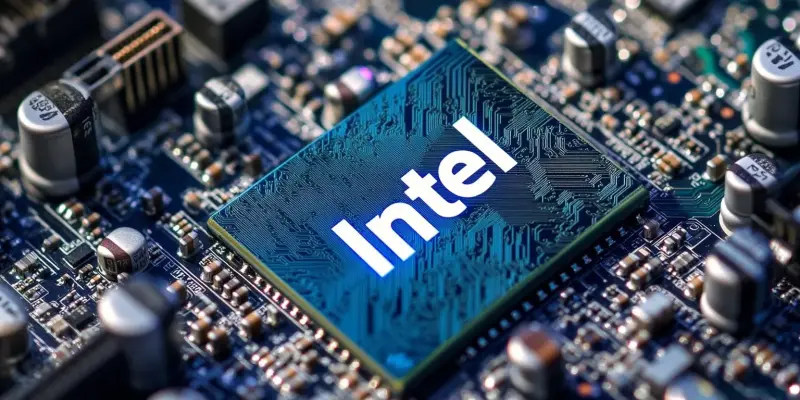The semiconductor industry has always been a battleground for technological supremacy, with Intel and TSMC leading the charge in pushing the boundaries of chip performance, density, and efficiency. The ongoing rivalry between these two giants has reached new heights with Intel’s recent announcement of its 18A process, sparking curiosity and debate about its competitive edge against TSMC’s N2 technology. The latest progression suggests that Intel may be closing the gap in semiconductor technology, proving that years of research and innovation could finally be paying off.
Innovations and Technological Advances
Intel’s 18A Process
Intel has announced a significant breakthrough with its 18A process, achieving an SRAM density of 38 Mb/mm², a figure that stands in close comparison to TSMC’s N2 process. This remarkable advancement marks a pivotal moment for Intel, showcasing the company’s ability to compete in a critical facet of semiconductor technology. A standout feature of the 18A process is the implementation of Backside Power Delivery Network (BSPDN), a cutting-edge innovation that shifts the power delivery to the backside of the wafer. This approach improves power efficiency and signal integrity, potentially enhancing overall chip performance.
While the “high-density” versions of Intel’s 18A process demonstrate promise in terms of SRAM density, the real test lies in the transition from theoretical capability to practical application. The production yield rates and the integration of these advanced processes into commercial chip manufacturing will ultimately determine the success of Intel’s 18A process. Intel’s ability to meet consistent production targets and address any unforeseen challenges during this phase will play a critical role in solidifying its position as a chief competitor to TSMC.
TSMC’s N2 Process
On the other side of the spectrum, TSMC has continued to advance its semiconductor technology with the N2 process, which has shown a 12% improvement in SRAM density. This boost in density is largely attributed to the incorporation of Gate-All-Around (GAA) technology and the shift from traditional Fin Field-Effect Transistors (FinFET) to nanosheets. The transition to nanosheet structure allows for better control over the electrical properties, contributing to improved customization and precision in the chip design.
The nanosheet design in TSMC’s N2 process is not just a step up in terms of technology but a leap in innovation that positions TSMC as a formidable player in the semiconductor landscape. The ability to deliver significant advancements while maintaining reliability and manufacturing efficiency underscores TSMC’s expertise in semiconductor process technology. Furthermore, industry experts believe that the continuous iterations and enhancements in TSMC’s manufacturing practices will further fortify their lead in this highly competitive domain.
Competition and Market Impact
The High-Stakes Semiconductor Race
The competition between Intel and TSMC is more than just a quest for technological superiority; it is a high-stakes race with significant implications for the semiconductor industry as a whole. The advancements in SRAM density by both companies indicate a focused effort to optimize chip performance and efficiency, which are critical factors driving the next generation of electronic devices. The market dynamics will be significantly influenced by how these companies manage to integrate their advanced processes into the global supply chain.
Intel’s innovative strategies with its 18A process and the adoption of BSPDN are seen as transformative leaps that could potentially level the playing field with TSMC. Yet, achieving comparable production efficiency and real-world application success is paramount to shifting the momentum in Intel’s favor. Likewise, TSMC’s sustained commitment to refining the N2 process through substantial technological upgrades affirms its stronghold in the semiconductor market. Industry stakeholders will likely keep a close watch on the implementation phases, looking to see which company gains the upper hand.
Future Considerations
The semiconductor industry has long been a field of intense competition, with Intel and TSMC at the forefront in the race to advance chip performance, density, and efficiency. This ongoing rivalry has intensified following Intel’s recent announcement of its 18A process, which has ignited discussions on its potential competitive edge over TSMC’s N2 technology. Such advancements suggest that Intel might be catching up in the semiconductor sector, signaling that years of dedicated research and innovation are beginning to bear fruit.
Historically, Intel and TSMC have been viewed as the main drivers of technological progress in the semiconductor industry. Their contributions are critical, given the essential role semiconductors play in modern electronics and various industries. The announcement from Intel could mark a pivotal moment in the industry, as both companies strive to outdo each other. As Intel continues to innovate, the gap between the two tech behemoths narrows, hinting at a future where competitive dynamics within the semiconductor space continue to evolve.

